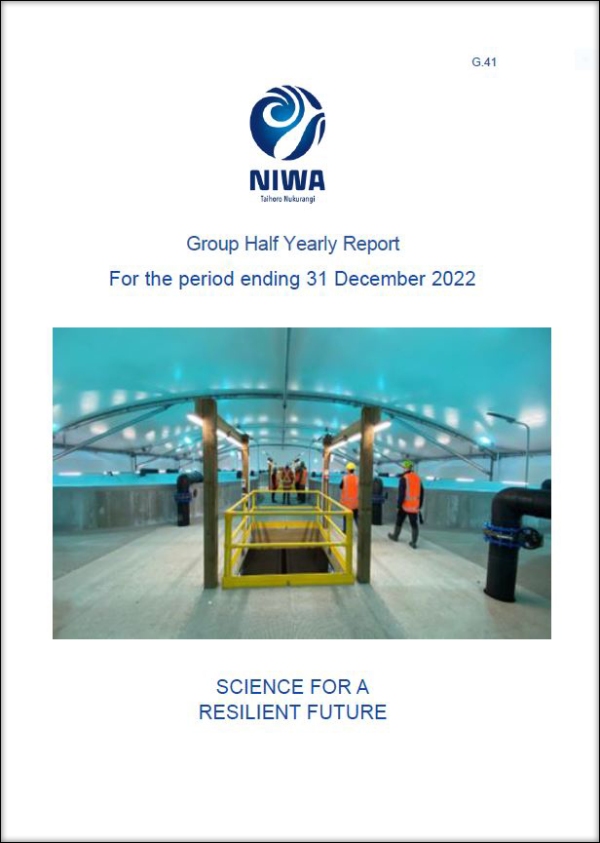Overview
NIWA has had a strong start to the financial year, with revenue at the half year stage being well ahead of budget at $85.7M ($7.6M above budget and $8.9M above the same period last year). Total expenditure of $86.7M was $9.4M higher than budget and $7.1M higher than the same period last year.
All the science and enabling function performance indicators outlined in the 2022/23 Statement of Corporate Intent are on track. The new facilities in Hamilton are at the final fit-out stage and we expect to be moving out of the old offices in July 2023. The experimental commercial-scale Recirculating Aquaculture System for the culture of high-value finfish – haku or kingfish – is nearly complete, and the first batch of fingerlings will be transferred to the new tanks in February/March 2023. The third major project to be completed will be the replacement for the coastal research vessel Kaharoa, which is on track for delivery in December 2023.
A number of significant science advances were achieved over the past six months, as outlined in the following pages. These included improved flood forecasting, which will enable modelling of flood inundation in any catchment in Aotearoa New Zealand; new national climate change projections; a New Zealand drought index forecast tool; a joint China-New Zealand expedition to explore the Kermadec Trench, including a submersible dive by NIWA marine biologist Dr Kareen Schnabel and Chinese staff, who became the first women to dive to Scholl Deep – 10,000 metres below sea level; and the deployment of five additional DART buoys to complete the operational New Zealand Tsunami Detection Network.
Financial Results
NIWA has had a strong start to the financial year, achieving revenue of $85.7M in the first six months. This result was $7.6M above budget and $8.9M above the same period last year. NIWA’s largest ocean-going research vessel, RV Tangaroa, was at sea for 6 days less than budgeted during the period.
Total expenditure of $86.7M was $9.4M higher than budget and $7.1M higher than the same period last year. This is largely driven by the revenue growth noted above, as well as inflationary pressures impacting personnel, travel, and materials & supplies expenses. Loss before tax was $(0.5)M, compared with a budgeted gain before tax of $1.0M. Loss after tax for the six month period was $(0.4)M, compared with a budget of $(0.1)M.
The closing cash balance and short-term investment balance of $9.9M was $16.0M below budget due to the timing of capital spending and working capital movements. The cash balance has decreased by $22M during the first half of the year due to capital spending being higher than operating cash flows, largely driven by investments in property renewals and a replacement for the RV Kaharoa, NIWA’s second ocean-going research vessel.
Capital spending for the period was $29.1M against a budget of $14.7M. The variance was due to differences compared to budget assumptions in the timing of investment spending during the year.
NIWA is continuing to pursue revenue opportunities in order to meet the full-year revenue budget. Notwithstanding the year-to-date shortfall, NIWA expects to meet the budgeted profit result for the year provided costs are carefully managed. We consider, however, that the most significant threats to NIWA’s financial performance is responding to inflationary pressures, and our ability to recruit and retain staff in the face of challenging market conditions as well as competition for key talent from central and local government.
Download:
Half Yearly Report for the period ended 31 December 2022 [PDF 1MB]

